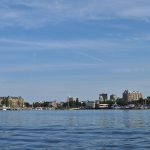Getting great map data for free
It used to be that you had to pay big dollars for GIS data. That’s changing quickly as more and more government agencies make their maps available at no charge.
There was a time when the data you needed to work with a GIS (mapping) program would cost you hundreds or, more likely, thousands of dollars. Government and private vendors alike saw map data as a grand moneymaking opportunity. These days, journalists wanting to starting using a GIS can get a great deal of data at no cost at all. Government agencies are realizing that they can create more value in the economy by allowing businesses and individuals to work with the data and create new map products, than they can by collecting a relatively small amount of money selling it.
Herewith, then, a modest sample of what`s available:
GeoBase, a co-operative effort between the federal, provincial and territorial governments offers several downloadable datasets at http://www.geobase.ca/geobase/en/index.html You can download the data in ESRI shapefiles, Geography Markup Language and the KML format used by Google Maps.
Probably the most useful of the files is the national road network, a complete street file for the whole country. You can download it by province. It includes street number ranges for geocoding, and also tells you if a road is paved, and the community in which it is located.
Several Canadian governments, including Manitoba, Ontario, Nova Scotia and New Brunswick, make map data available for download through the Geography Network Canada, hosted by ESRI Canada at http://www.geographynetwork.ca/data/freedownload.html You select the data by zooming in and out using an online map viewer. The farther you zoom in, the more detail you get in the map and the downloadable data. You can select a wide range of line and point features for download, including roads, railways, parks and so on.
Another source of free data is Statistics Canada, which gives away its own road network file, and boundary files for census geographical units, with the smallest available being city and town boundaries (what Statscan calls census subdivisions). The Statscan road network file lacks a field for the city, so if you are going to use it to geocode, you need to select and copy the portion for your city before you can use it. Otherwise, you may mix up Main Street, Hamilton with Main Street, Kitchener. You can download the files in several data formats, including Shapefiles and MapInfo .tab at http://www12.statcan.ca/census-recensement/2006/geo/index-eng.cfm.
[node:ad]Natural Resources Canada’s GeoGratis site offers a number of downloadable files, the most useful of which may be the boundaries of federal electoral districts. Go to http://geogratis.cgdi.gc.ca/geogratis/en/collection/search.do
You can download a shapefile of Ontario’s provincial ridings from Elections Ontario at http://www.elections.on.ca/en-CA/Tools/ElectoralDistricts/Shapefile.htm. Ontario uses the same riding boundaries as are used for federal elections.
Finally, Alberta, offers historic forest fire map data at http://srd.alberta.ca/wildfires/information/spatialdata.aspx
There are many other maps available for free download, with more being added all the time. So while the software you need to put the data to use is still costly (even an educational license for ESRI’s ArcView, the most commonly-used GIS, will set you back about $500), once you have the software, you no longer have to pay a king’s ransom to obtain data. If you just want to look at the maps, you can download a reader such as ESRI`s (http://www.esri.com/software/arcexplorer/download9).
Happy exploring.




